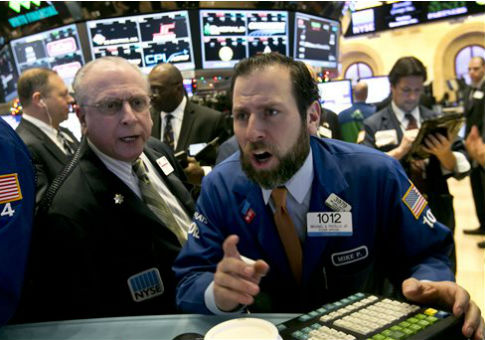Despite increasing federal revenues, debt held by the public is projected to increase 71 percent over the next decade, according to the Congressional Budget Office’s annual economic outlook.
Over the next 10 years, the federal government is projected to take in roughly $1.6 trillion in individual income taxes, payroll taxes, and corporate income taxes. However, the federal government is projected to spend $2.4 trillion over the same period.
Most of the projected growth in spending will go to interest on the debt and mandatory spending that includes Social Security, Medicare, Medicaid, and subsidies for health insurance through Obamacare. Social Security and Medicare are responsible for almost half of the projected increase in outlays from 2016 to 2026.
The federal government will see an increase in the deficit for the first time in six years due to the growing gap between revenues and outlays.
"Growth in spending — particularly for Social Security, health care, and interest payments on federal debt — outpaces growth in revenues over the coming 10 years," the report states. "The projected deficits would push debt held by the public up to 86 percent of GDP by the end of the 10-year period, a little more than twice the average over the past five decades."
By 2025, debt held by the public is projected to increase to $22.4 trillion from $13.1 trillion in 2015 — growth of 71 percent over a decade.
The report projects that three decades from now, debt held by the public will amount to 155 percent of GDP, an amount that could trigger a fiscal crisis.
"There would be a greater risk that investors would become unwilling to finance the government’s borrowing needs unless they were compensated with very high interest rates; if that happened, interest rates on federal debt would rise suddenly and sharply," the report states.
To some policy experts, the report’s findings illustrate the need for reform to address the national debt.
"This CBO report is further proof that we need a new economic direction in America: lower taxes, less spending, and less debt," said Andy Koenig, senior policy advisor at Freedom Partners.
"D.C. bureaucrats treat public debt like a blank check, but the reality is that our children and grandchildren will foot the bill tomorrow for Washington’s irresponsible spending today," Koenig said. "It’s no coincidence that our economy hasn’t improved under an administration that continues to spend outside of its means."
The report finds that some laws, including the Bipartisan Budget Act of 2015 and the Consolidated Appropriations Act, have boosted real GDP slightly this year. It predicts that others, including Obamacare, will dampen growth in years to come.
"Some aspects of fiscal policy under current law, particularly the Affordable Care Act and real bracket creep, are projected to dampen the supply of labor and therefore the growth of output through 2020," states the report.
"We didn’t really need another report to confirm that Obamacare’s a job killer — just talk to one of the thousands of American small business owners who can’t afford to hire more than 50 employees," Koenig said. "Even Hillary Clinton admits that the employer mandate is killing full-time jobs. When we talk about the Affordable Care Act stifling economic growth, this is exactly the type of crushing burden we’re referring to."
While it is projected that the unemployment rate will fall to 4.5 percent in the fourth quarter of 2016, the report notes that slack will remain in the labor force.
According to the CBO, fewer individuals are participating in the labor market than if the economy were operating at its full potential. This metric is projected to decline even further due to demographic trends like an aging population and federal policies.
The economy is expected to increase by 2.7 percent this year, 2.5 percent in 2017, and at an average annual rate of 2 percent from 2018 through 2026. This would mark a significant slowdown from the growth observed in past decades.
